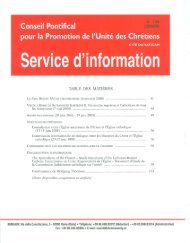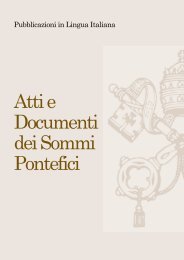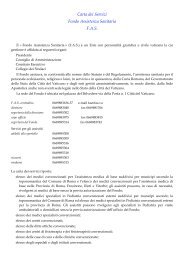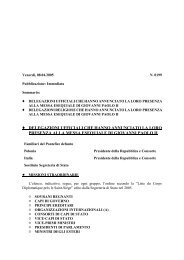Libretto della Celebrazione - Vaticano
Libretto della Celebrazione - Vaticano
Libretto della Celebrazione - Vaticano
Create successful ePaper yourself
Turn your PDF publications into a flip-book with our unique Google optimized e-Paper software.
in maturing. The Christian life of the people blossomed again as if by<br />
magic.<br />
The new Franciscan Congregation also grew in number and two<br />
filial houses were founded in Sant Ana and Canoa. Very soon after<br />
however, the missionary work of Mother Mary Bernard was marked<br />
by the mystery of the Cross. Many indeed were the sufferings to<br />
which she and her daughters were submitted: absolute poverty,<br />
torrid heat, uncertainty and difficulties of every kind, risks to their<br />
health and security of their lives, misunderstanding on the part of<br />
ecclesiastical authorities and, besides, the separation of some Sisters<br />
from the community, establishing themselves later as an autonomous<br />
congregation (the Franciscans of the Immaculate: Blessed<br />
Charity Brader). Mary Bernard underwent all this with heroic<br />
fortitude and in silence without defending herself or nourishing<br />
resentment towards anyone, but forgiving them from her heart and<br />
praying for those who made her suffer.<br />
As if all these trials were not enough, a violent persecution in 1895,<br />
begun by forces hostile to the Church, obliged Sr. Mary Bernard and<br />
her Sisters to flee from Ecuador. Without knowing where to go, she<br />
went, with 14 Sisters, towards Bahia, from where she continued<br />
towards Colombia.<br />
The group was still wandering when it received an invitation from<br />
Msgr. Eugene Biffi to work in his Diocese of Cartagena. So, on the 2 nd<br />
of August 1895, the feast of the Porziuncola of Assisi, the Foundress<br />
and her Sisters, exiled from Ecuador, reached Cartagena, and were<br />
received paternally by the Bishop. They found hospitality in a female<br />
hospital, commonly called a “Pious Work”. The Lord had led her by<br />
the hand towards that asylum, where Mother Mary Bernard would<br />
remain to the end of her life. After the house in Cartagena, the<br />
Foundation was extended not only in Columbia but also in Austria<br />
and Brasil.<br />
With a compassionate heart, authentically franciscan, she engaged<br />
above all in relieving the spiritual and material needs of the<br />
poor, whom she always considered to be her favourites. She used to<br />
say to the Sisters: “Open your houses to help the poor and<br />
39


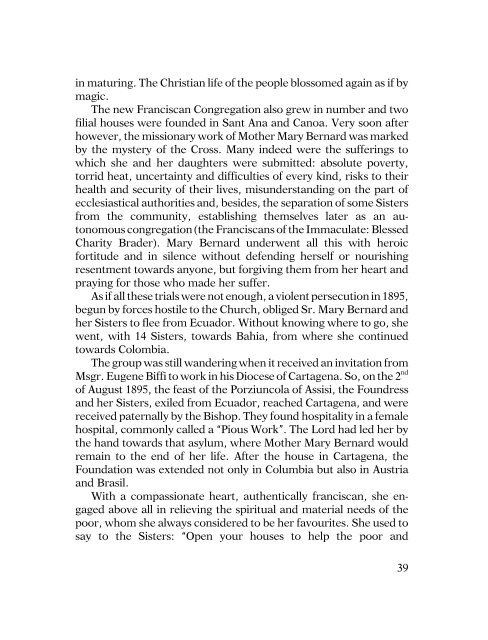

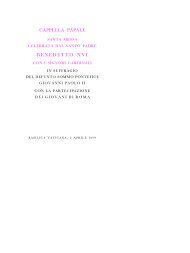
![AAS 01 [1909] - La Santa Sede](https://img.yumpu.com/51456523/1/180x260/aas-01-1909-la-santa-sede.jpg?quality=85)
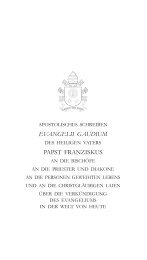
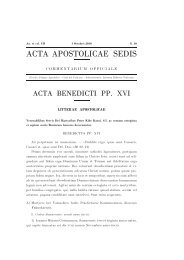
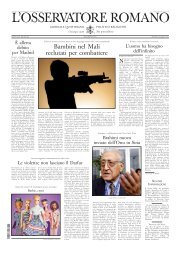
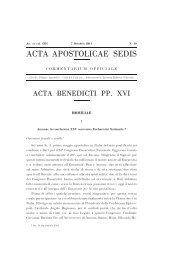
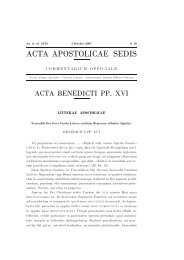
![AAS 20 [1928] - La Santa Sede](https://img.yumpu.com/19772818/1/180x260/aas-20-1928-la-santa-sede.jpg?quality=85)
